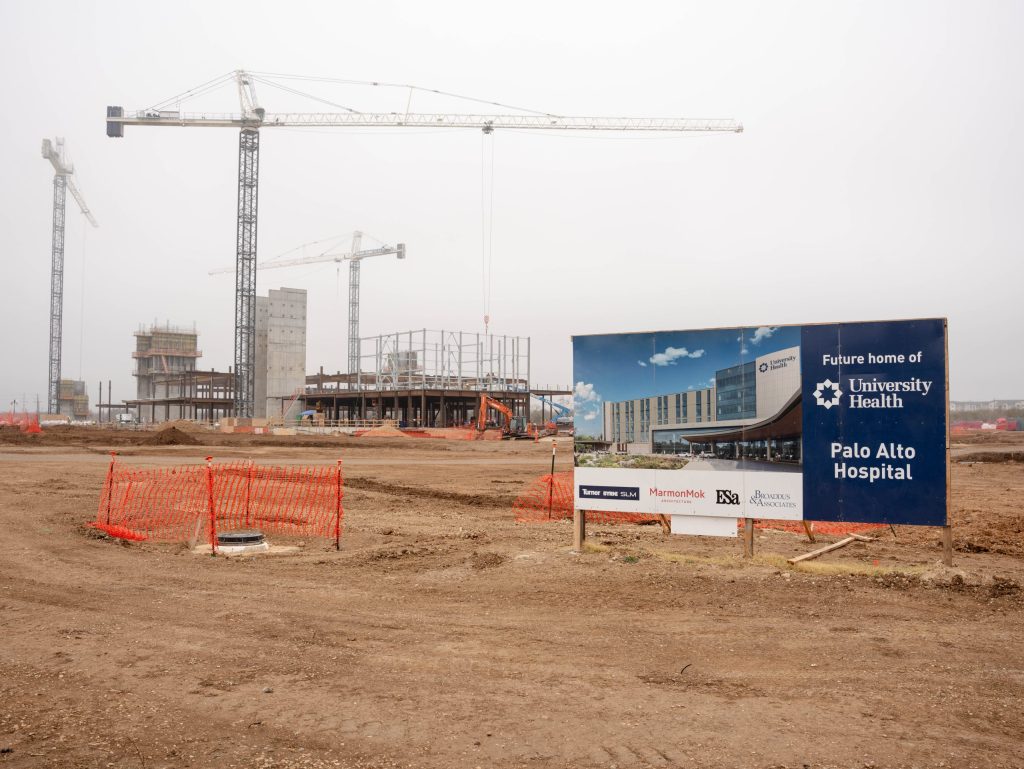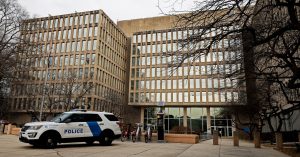Ed Banos vividly remembers the intense pressure San Antonio’s health care system faced at the peak of the pandemic, when COVID-19 patients filled 70% to 80% of hospital beds across the region.
With resources stretched thin, hospitals struggled to find space and care for non-COVID trauma patients
Amid those unprecedented challenges, University Health System, the public hospital district serving San Antonio, began to lay the groundwork for long-term expansion, Banos recalled — a vision that has since been put into action as part of the organization’s strategic recovery and growth.
“We’re a single hospital in town, and COVID was taking up a lot of our beds,” said Banos, University Health’s executive vice president and chief operating officer. “One of the things that Commissioner [Tommy] Calvert (Pct. 4) said was, ‘Do you think we need to have more community hospitals and University Health?’ And I would say that … [his] comments really got the conversations going.”
Since then, University Health has opened a new Women’s and Children’s hospital in the Medical Center, and has broken ground on two new clinics and two new hospitals across the city.
The most recent groundbreaking was at the site of University Health Wheatley, which is expected to open on the East Side in late 2025. The others include University Health Vida and University Health Palo Alto Hospital on the city’s South Side, and University Health Retama Hospital on the North East side.

Banos is hopeful the new locations can help address health access inequity in San Antonio, where the majority of hospitals and health care facilities are disproportionately located on the city’s North Side.
Since 2020, area leaders such as Councilwoman Adriana Rocha Garcia (D4) and Dr. Lyssa Ochoa of the San Antonio Vascular and Endovascular Clinic have been advocating for more health care access to underserved areas in San Antonio such as the South Side and East Side, which are made up largely of Hispanic and Black communities.
“We’re excited about all of these patients, that we can get and expand access to care, and really start changing the social determinants of health on the South Side,” Banos said. “We see both [new hospital] sites being very valuable to give those parts of the community access to University Health.”
Construction timeline
Construction is progressing steadily on the two new University Health community hospitals, Banos said, noting that ground was broken on both sites last January and February.
“The foundations are built in our two community hospitals, and steel is going up. … Everything’s looking good for substantial completion in late 2026 and early 2027,” Banos said.
When it opens in 2027, University Health Palo Alto Hospital, located on a 68-acre campus next to Texas A&M–San Antonio, will be a five-story acute care hospital with a connected medical office building.

While it will initially have 166 inpatient beds, the design allows for an expansion to 286 beds as the South Side population continues to grow, Banos said. The hospital will feature a 24/7 Emergency Department, a labor and delivery unit, a NICU, inpatient units and operating rooms as well as radiology and lab services.
Across town, University Health Retama Hospital will be located next to the Retama Park Horse Track in Selma, with an expected opening in late 2026 or early 2027. This facility will also include a 24/7 emergency department, labor and delivery unit, radiology, laboratory, pharmacy, neonatal intensive care unit and inpatient units for both adults and children.
The Retama Hospital will initially have 140 beds, but like its counterpart, it is designed to expand to 286 beds as the surrounding area grows. A connected 100,000-square-foot medical office building will provide space for a wide range of medical and surgical specialists, Banos said.
Both new clinics — University Health Wheatley, located near the Wheatley Heights Sports Complex, and University Health Vida, located on Jaguar Parkway — are also slated to open in early 2026.
Together, the new hospitals represent a roughly $1.5 billion investment in the community, Banos said, noting each hospital costs about $750 million to build. Most of the funding for the new community hospitals has come from hospital operations, Banos said, though he added that University Health received $500 million in bonds in 2022 to help support its growth efforts.
While the University Health System is a public district that collects some funding through a property tax, the majority of its revenue comes from its regular operations. In 2023, about 18% of the system’s revenue came from its $0.276235/$100 tax rate.
“It’s all being used with the same tax rate that we currently are at,” Banos said.
Addressing a need
Since first taking up her post as a councilwoman in 2019, Rocha Garcia has been a strong advocate for seeing healthcare access expanded on the city’s South Side.
In a recent commentary written jointly by Rocha Garcia and Councilwoman Phyllis Viagran (D3) and Ochoa, they note that of the city’s 5,000 staffed hospital beds, only 100 are available south of Highway 90, providing just 70 acute care and 30 maternal and childbirth beds at Mission Trail Baptist Hospital.
Rocha Garcia was eager to talk about the issue via phone on Wednesday, quickly responding to a text message with a phone call.
“I’m so excited that we will have more access to health care,” she told the San Antonio Report, noting that many of her patients struggle with transportation issues. “The residents that we represent, they already represent a vulnerable part of San Antonio. So for a long time, they’ve been left behind.”
During the pandemic, her district saw some of the city’s highest rates of mortality because of the co-morbidities associated with a lack of access to quality food, health care, jobs and housing, she said. Making San Antonio a healthier community starts by investing in its underserved areas, she added.
“Access is critical, and I think that this is going to be the beginning of a renaissance of the South Side,” she said.
Both Mayor Ron Nirenberg and Bexar County Judge Peter Sakai voiced similar sentiments. Nirenberg told the Report that University Health’s plans for hospitals on the South Side and the North East Side “are just what the doctor ordered,” while Sakai added that “health care access is a basic human right for the people in Bexar County.”
“This hub-and-spoke strategy [a metaphor to describe a central location with smaller branches] provides help to parts of the county that have limited access,” Sakai said. “This has been a top priority of Commissioner [Rebecca] Clay-Flores (Pct. 1) ever since COVID showed we have a lack of basic services in many parts of the county.”
Dr. John Shepherd, president of the Bexar County Medical Society, touched on the same hub-and-spoke model, saying that these community hospitals both support University Health’s flagship hospital by offloading some of its less critical patients while also making it so that more dire cases can be quickly taken to and handled at the Medical Center location if need be.
“Bexar County — our population is continuing to skyrocket,” Shepherd said. “This is going to put health care in two areas that are really growing.”








